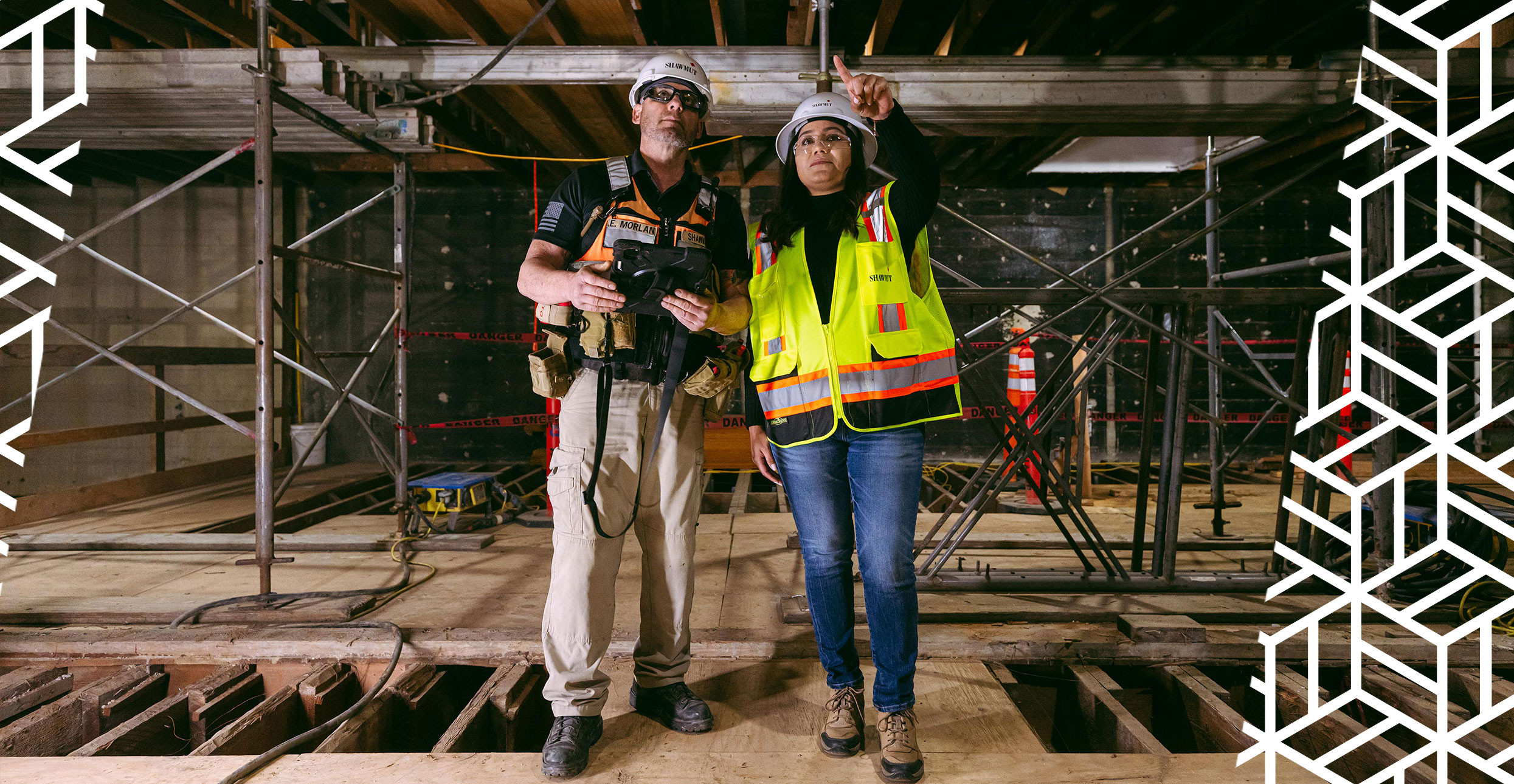Chief safety officer Shaun Carvalho contributed his insights to Construction Tech Review on how to make jobsites more safe and efficient through technology that drives subcontractor buy-in, engagement, and satisfaction.
There’s a misconception around construction and its efficiency—that the three points of the project management triangle—time, cost, and quality—can never all be achieved. The claim is that at least one will inevitably be sacrificed—this doesn’t have to be the case. Time, cost, and quality are all underpinned by safety, and with the right technology, utilized in the right way, all three aspects of the project management triangle can be achieved.
Safety programs and technology are only as strong as the network of people who use them. While safety expectations on a jobsite are established, modeled, and enforced by the construction management firm, it’s the subcontractors whose actions and work habits determine the actual safety of the site. With this in mind, a pointed focus when researching, vetting, and piloting safety technology should be on the buy-in, engagement, and satisfaction of subcontractors.
It is estimated that contractors in eastern Massachusetts spend over $100 million in lost work production annually just through subcontractors’ time spent attending different construction manager safety orientations. This does not take into account specific trainings, daily meetings, work permits, and other preventative measures people take to reduce risk on sites. With significant time spent on safety trainings and documentation, there’s opportunity to make the system more efficient, keeping—and even enhancing—the quality of the content while driving a higher level of quality controls and a more productive, safe workforce.
The key is deploying technology that manages subcontractor qualification, orientation, and documentation. The end result—when used correctly—is enhanced subcontractor communication, collaboration, and engagement in safety. Digital management systems create full profiles for each subcontractor from the start of the project, housing certifications and all key safety materials and trainings. With this key content digitized, both subcontractors and project teams can easily access and search for the information on a phone or tablet, eliminating time spent on filing and organizing paper documentation. It also streamlines the formatting of safety materials, creating consistency, and creates a database of pre-approved subcontractors that can be accessed by the entire construction management firm.
These subcontractor management systems also have the capability to conduct and track orientations and safety trainings, freeing up site safety managers and superintendents and giving them additional time to walk the site and ensure everyone is working safely. This function also allows subcontractors to complete the orientations and trainings on their own schedule, rather than having their workflow interrupted for a designated training time. Pre-task planning meetings can also be documented in these systems, adding another layer of data that shows the safety performance of the subcontractors and project.
One of the most important benefits of these digital management systems—apart from the time and cost savings—is the engagement of the entire jobsite team. Since each subcontractor inputs their own data, it drives ownership of their work and performance. The project team performs quality control and review of the data, forcing a closer eye on details and review of the work on-site.
We’ve begun a pilot with HammerTech on a $220 million, three-year project that will have hundreds of subcontractors on-site each day. By tracking certificates, orientation, safety trainings and events, and pre-task planning meetings digitally through the HammerTech platform, we’re anticipating hours of time savings daily by our team as well as our forepersons. By digitizing the process, we can feed the data through our predictive analytics tools and into our safety dashboard to identify leading indicators of risk, with the ultimate goal of creating enhanced reliability of incident prediction.
By implementing technology that increases safety efficiency and productivity on-site, firms are providing support to their subcontractors, strengthening their network and ultimately driving projects that achieve time, cost, and quality.
